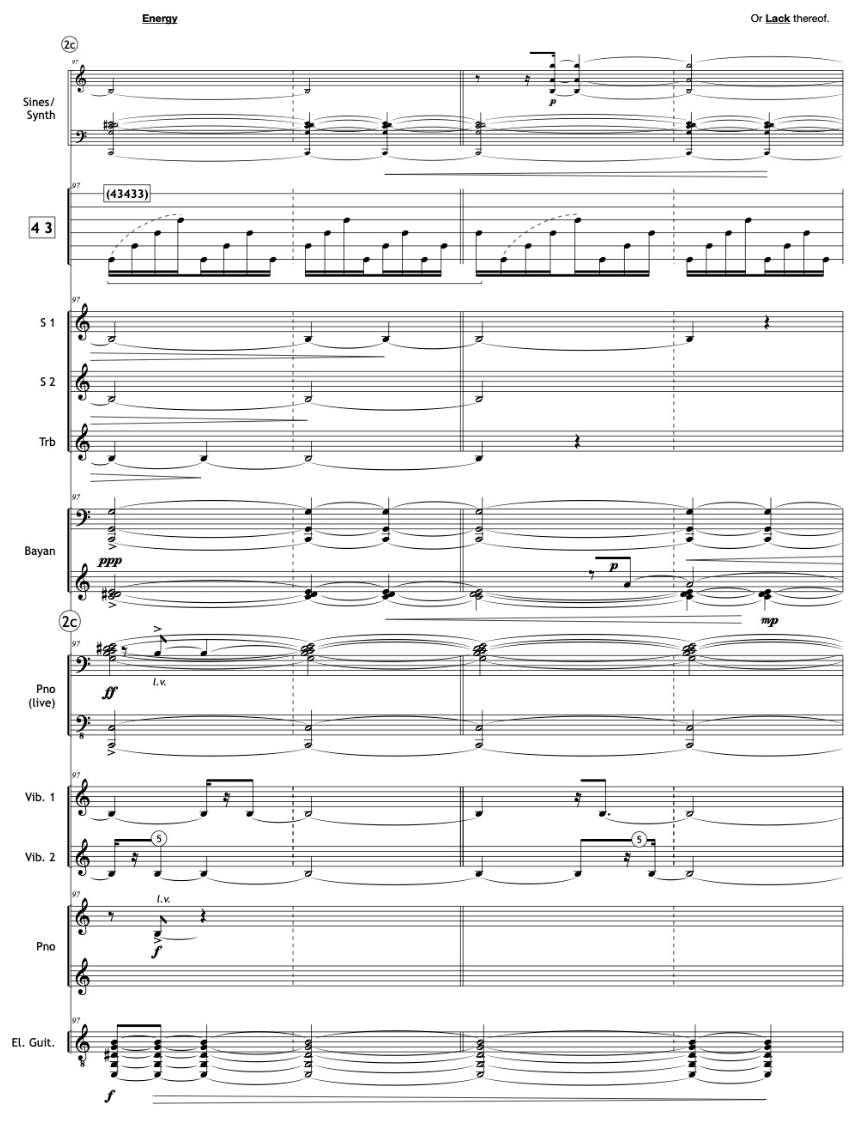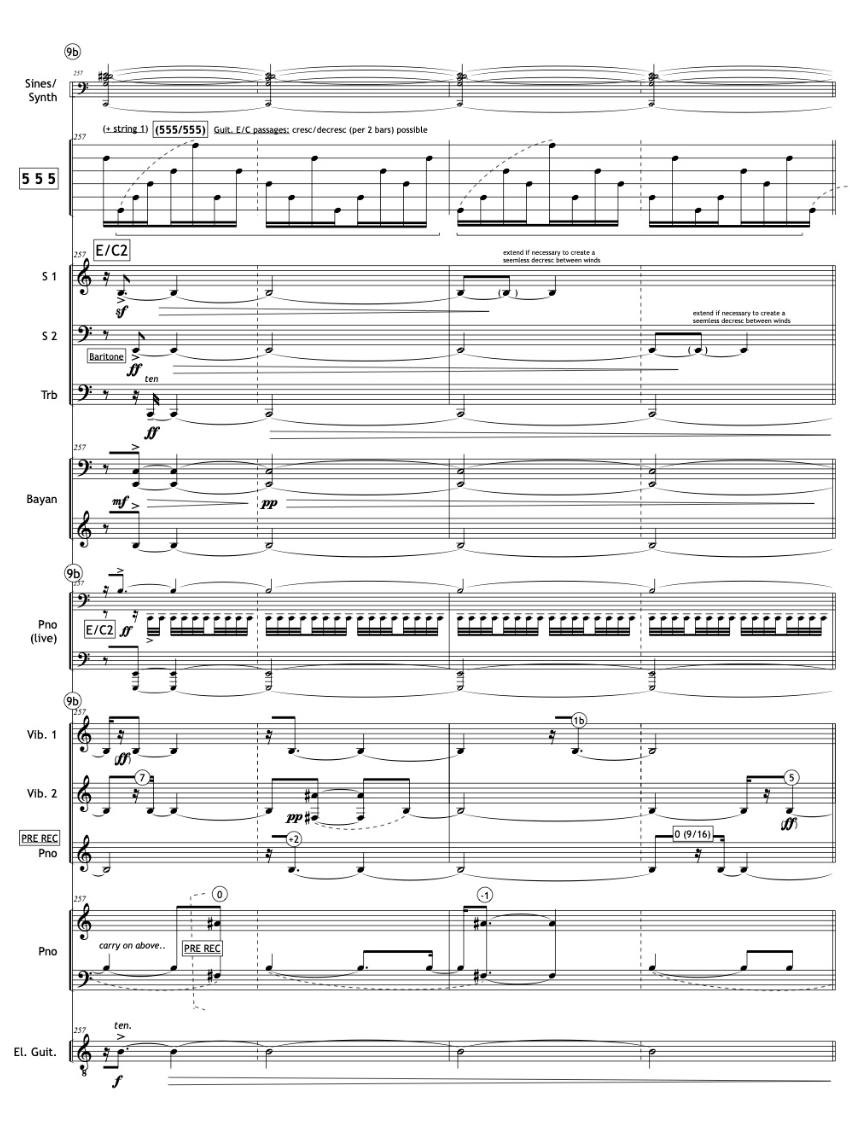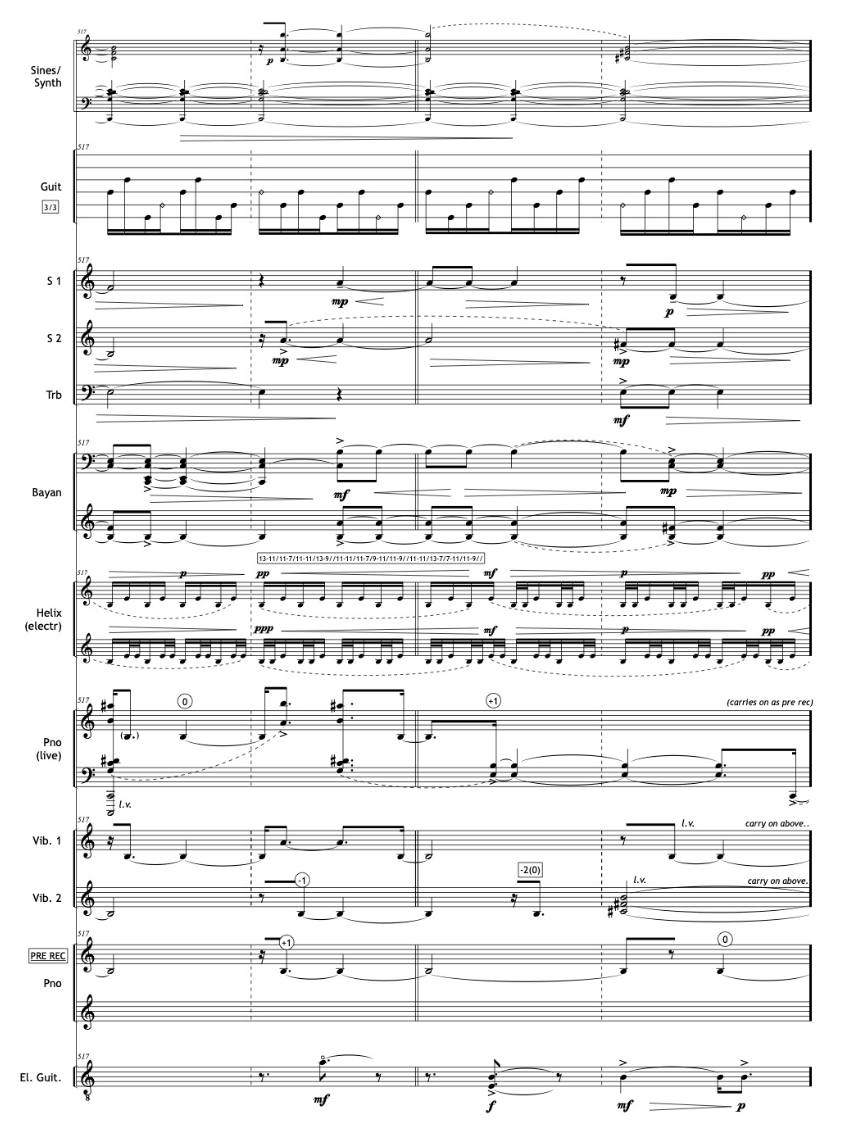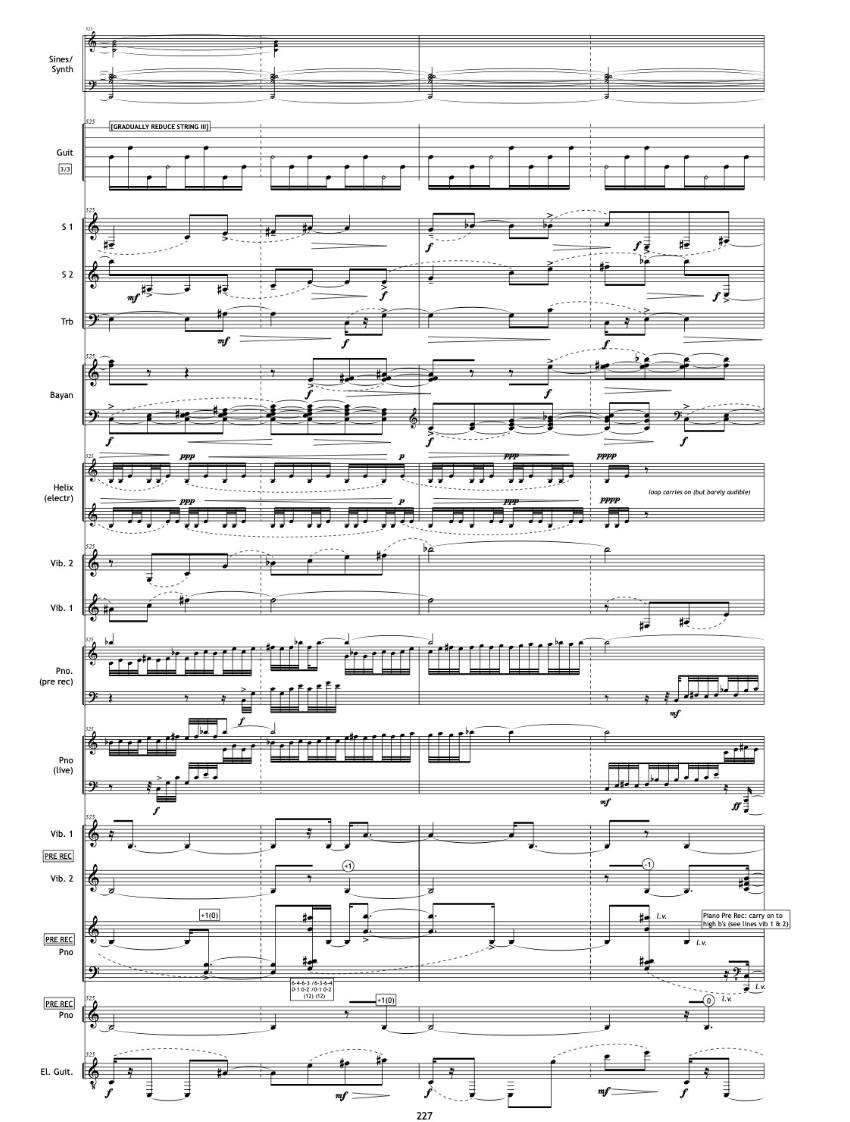No 61/3 Stereo (2018)
for amplified ensemble, sinewaves & pre-recorded tracks
Commissioned by: Ensemble Klang XL, with financial support from the Netherlands Fund for the Performing Arts
First Performance: December 20 2018, Festival Musical Utopias, Korzo, Den Haag
Instrumentation: solo electric guitar, 2 saxophones, trombone, 2 vibraphones, bayan, grand piano, electric guitar, live electronics & pre-recorded tracks
Duration: 30'
Special Features: Performance requires sound engineer, amplification for all musicians, click tracks throughout, 6 speaker surround sound setup, live electronics, Ableton sound patch, 6 different guitars and 2 synthesizers
Additional information: Ensemble Klang website
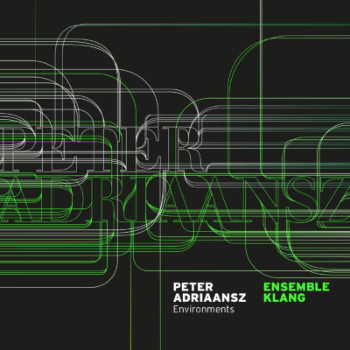 Listen/Buy: Ensemble Klang on Bandcamp
Listen/Buy: Ensemble Klang on Bandcamp
Info/Program note:
Stereo is the third part of Environments and, of the three, by far the most symbol- heavy and the most of our time. The work deals with the concept of ‘Polarity’, as an expression of man’s ideological or political pursuits. And it’s a grim business. The work seeks to manifest polarity in every facet of its organization while simultaneously undermining/denying the very existence of polarity from the start. Like Mono and Watts, Stereo again resorts to an ostinato (now set for restrung electric Baritone guitar), taking the original score from Mono but now stripped of its rhythm, leaving only the gestural development played at high speed.
Where Mono could be said to be a ‘line’ and Watts a circle, Stereo is definitely a square, defined by artificially erected borders. These borders are implied in the setup, text treatment, sound design (with each players’ sound coming from the opposite side of the room) and even in the bar-divisions of the work, where the music changes indiscriminately every 16, 24, 32, 48 or other such multiples of ‘square’ bars.
Underneath Stereo lies a familiar yet at the same time mysterious text, the so-called Principle of Polarity, which appears to have been printed for the first time in this particular form in a book called the Kybalion (though its origins most certainly date back much further, considering the familiar Buddhist tenets of Yin and Yang). This text, in itself flexible and frequently used in changeable formats and wordings, served as the basis of Stereo and was, after due research and consideration, ‘updated’ on several points by the author himself and cast into the present form. In the case of Stereo the speech is set entirely rhythmically, meaning that individual sentences are chopped up into words and phrases and then placed ‘evenly’ at approximate distances of 4, 8 or 16 bars, separating each ‘opposite’ and creating an artificial but emphatic form of timing due to the imposed silences between utterances.
Of the many facets of opposition and duality expressed in the work, metaphoric as well as literal, some are perhaps interesting to point out: such as 1) the harmony itself (consisting of a layering of two entirely unrelated harmonies, the Watts chord and the reconstructed synth chord - originating from a synthetic speech demonstration video found online with fragments from David Cronenberg’s first film Stereo)1, 2) the stereo sine-pulse phasing (where two independent speeds interlock and phase, thereby automatically creating ‘unity’ when the ears can no longer tell them apart or tell the difference between up or down), and 3) the two juxtaposed materials which run the entire course of the piece: the attack sections and the ‘Run’ sections. On an analytical level the Runs themselves also constitute a ‘duality’, with the two ‘opposing’ harmonic series on the fundamental and the tetrachord (ostensibly the ‘furthest removed’) in fact being practically identical where the upper end of one is in practice the lower end of the other. For the audacity of the author to ‘expand’ on the original text the work also includes a metaphorical allusion in the form of two morse-code entries which refer back to a track from David Byrne and Brian Eno’s seminal album My Secret life in the Bush of Ghosts. Thereby not excusing the additions, but at least apologizing for them.
Through its own working, Stereo eventually seeks to cancel out all forms of contrived polarity as the various materials gradually coalesce and combine, with the runs increasingly overlapping until the borders can no longer be told apart and the multitude of independent lines which constitute the piece eventually all combining simultaneously just prior to the speaker’s final entry.
(1 The polarity of these two chords is probably most notably revealed at the very end of the piece, when the Stereo synth chord is subtracted from the overall sound leaving only the Watts chord remaining, with a sudden tonic shift.)
